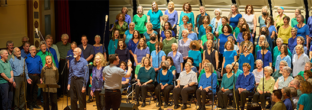The connection between CO2 readings and covid
The connection between CO2 readings and covid is they measure the ventilation in the room. People generate CO2 as they exhale, talk, sing. If the room has good ventilation the CO2 is being cleared out and doesn’t accumulate. So, CO2 is a marker for how well the ventilation is working in the room. This is the connection to covid. If the ventilation is clearing out the CO2, it’s also clearing out droplets that would contain covid virus if someone was infected.
A CO2 reading of 400-500 is a normal outdoor CO2 level. We set the ventilation in the room for a reading in the low 500’s before singers arrive. If the readings in the room move above 650 we increase ventilation until the numbers come down into the 500’s again.
Here is an article to read on the topic. You will see they set the levels much higher than we do at Mystic.
Can CO2 sensors be used to assess COVID-19 transmission risk? https://ncceh.ca/content/blog/can-co2-sensors-be-used-assess-covid-19-transmission-risk
